
Membrane Bio Reactor System
Get Price Quote
1 Set (MOQ)
Ahura Aqua offers Membrane Bio Reactor (MBR) Systems that are designed to provide advanced wastewater treatment. The MBR system is an innovative technology that combines biological treatment with membrane filtration to produce high-quality treated water. The system uses a biological process to remove organic matter, nitrogen, and phosphorus from wastewater, followed by membrane filtration to remove any remaining solids and bacteria. The MBR system is highly efficient and produces high-quality treated water that meets stringent regulatory requirements. Ahura Aqua's MBR Systems are customizable to meet the specific needs of their customers, with different sizes and configurations available to suit a range of applications. Additionally, the company provides comprehensive after-sales service and support to ensure that their customers get the most out of their MBR systems. Overall, Ahura Aqua's MBR Systems provide a reliable and efficient solution for wastewater treatment, ensuring that the treated water meets the required standards of purity for discharge or reuse in various applications.
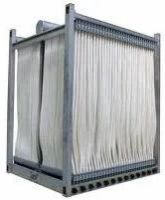
Membrane Bioreactor
Get Price Quote
1 Piece (MOQ)
Best Deals from Membrane Bio Reactors

Membrane Bio Reactor
Get Price Quote
1 Piece (MOQ)
MBR combines biological treatment with membrane filtration, effectively separating treated water from sludge. This technology produces high-quality effluent and minimizes the need for additional clarification processes. Advantages: High-quality effluent, compact design, and reduced footprint.

Membrane Bioreactor
18,000 Per modules
4 Piece (MOQ)
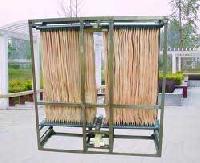
Membrane Bio Reactor
Get Price Quote
The company offers high quality Membrane Bio Reactor that is basically used for wastewater treatment. This Membrane Bio Reactor has a high pollutants removal rate & renders steady operation. We are even a single supplier in India that provides high quality membrane bio-reactor at low cost. Membrane Bio Reactor (MBR) technique is a new method for wastewater treatment that integrates membrane separation and biotechnology, rejects activated sludge and macromolecular organic matter in aerobic tank or MBR tank with membrane separation plant, thus saving the use of secondary sedimentation tank. Consequently, the concentration of activated sludge rises greatly, the HRT and the SRT could be controlled separately, and difficult degraded matters are constantly degraded and reacting in reactor. Therefore, compared to traditional biological treatment methods, MBR technique greatly strengthens the function of the bioreactor with the using of membrane separation, it has advantages as follows: high biochemical efficiency, strong load impact resistance, stable effluent quality, smaller foot print, long period of sludge discharging, easily automatic control, etc. MBR is a high effective combination with membrane separation and biological treatment instead of secondary sedimentation tank of activated sludge process to separate.Features : High pollutants removal rate, strong capacity of sludge bulking resistant, steady treated effluent quality, suspend solid (ss) in effluent near to zero. Accomplish complete separation between hydraulic retention time (hrt) and sludge retention time (srt). Operation is simple and flexible. Stop loss of activate organism by membrane mechanical interception. Keep high concentration of activated sludge in bioreactor so that enhance volume load largely and reduce sludge load. Membrane reactor integrates traditional aeration tank and secondary sedimentation tank into one system and displaces all equipment after secondary sedimentation tank which in conventional process. Largely reduce foot print, and save investment of civil works. Due to the function of membrane interception, srt is prolonged, this process create good growing environment for microorganism (example: nitrobacteria) which grow slowly. It can enhance system nitrification ability. It will enhance efficiency of big molecular organism degradation. Lead them to degrade completely. Due to very long srt, membrane bioreactor can be role of sludge nitrification tank so that it’s remarkable to reduce sludge production, decrease disposal cost of sludge. Activated sludge in bioreactor will not be lost during treated water production. Concentration of sludge will be along with organism concentration change to change, and reach a dynamic balance. So, the treated water quality is steady and the system has strong impact load tolerant capability. The reactor special structure causes wastewater mix uniformly, so activated sludge has good dispersibility, largely increase sludge specific surface area. This is another reason of our system has good efficiency. This is also the characteristic which conventional biological methods cannot compare with it because conventional biological methods will easily cause larger bacteria & colloid bulk in the wastewater. Material polypropylene (PP) We have two types of MBR system to suit different client’s requirement. First, is a small capacity compact steel tank MBR system for private parties, such as hotel, villa, car wash workshop, house to treat shower & bath grey water, domestic wastewater, car wash wastewater, etc. The treated effluent can be used to garden, landscape, car wash, toilet flush, irrigation, other recycling utilization. This system can be designed to fit international container size, ship easily. We also accept to supply our full design to guide you build RCC STEEL FRP tank in your place. Below photo is system RCC MBR for hotel wastewater treatment. Another is big capacity MBR system for government tenders; RCC tank is in client’s scope as per our drawing. For equipment in system, clients also can follow specification we submit to purchase locally, we will supply complete technical support, if necessary we can send engineer to give training at your place. hydrophilic before using the membrane, it should be treated by the hydrophilic process, the method is as follows first keep it in 95% industrial alcohol for about 2 minutes (attention: avoid the water collecting tubes of both sides be immersed in the alcohol), then use clean water to immerse and flush it for 13 minutes. If the membrane is not used immediately after the process, it should be packed hermetically, to keep the membrane fiber wet. Fouling prevents and membrane cleaning micropore air diffuser is recommended. The bubbles and stream produced from aeration can shake membrane fiber and scour it. Meanwhile using intermittent operation process, self-suction pump works for 13 minutes and stops for 2 minutes, to prevent membrane clogging and guarantee the long stable running. Before running the membrane, we should make sure that microorganisms in the biochemical tank grow activated and low stickiness. During operating, keep flow constant, strictly prohibit product water flow is non-stable. The suction negative pressure could be read out through electrical-touched pressure gauge, the operating negative pressure of membrane is -0.01 ~ -0.03mpa; if condition permitted, draw off water using a siphon type, and keep water level difference between biochemical tank and treated water tank is 3.0~4.0m, thus membrane slice could not be polluted easily and the using period could be longer. When the operating negative pressure is over 0.05mpa, membrane slice should be cleaned. Take off the membrane slice from the frame, wash its surface with clean water, clean away the activated sludge stuck on the surface; and then immerse the membrane slice in 3-5% naoh for over 2 hours (overnight is better), clean away organic matters and colloids on the surface, again wash the membrane slice with clean water, then the flux will be recovered. If wastewater contains high content of calcium, magnesium ion and metal hydroxid, after naoh solution cleaning, should immerse membrane in 2-3% hcl solution for 1-2 hours (better shake membrane in order to make Hcl and pollutants mix and react fully). And then wash it with clean water. In order to prevent corrosion, demount all metallic connection fitting before acid cleaning. If effect of above two ways is not ideal, could immerse membrane in 0.5% naclo for 0.5-1 hour, eliminate all organism on the surface, then washed by clean water. But, do not immerse membrane for so long time to avoid damage from oxidation, and it will reduce strength. During cleaning process, handlers are required to be careful to avoid fiber damage. Meanwhile, keep surface of membrane wet, prevent freezing and dry which will affect flux even no effluent. Note : Keep membrane wet at any time, because if dry, it will cause irreversible damage. Whatever naoh solid or solution and naclo, HCL solution all have high corrosiveness. Handlers should put on prevention things, avoid touching them directly. Naclo solution has strong oxidation, it will affect membrane life, only use it if acid and alkaline methods are not ideal Others make sure hydrophilic membrane and equipment be kept in 5-40 during the process of transporting and storing to avoid damaging the membrane. Prevent the equipment from long-time sunshine to avoid plastic damage by ultraviolet ray. If the site temperature is below 0, we suggest conducting hydrophilization process on site, if not use it immediately, should keep the membrane wet by sealing up and keeping warm; prevent freezing during hydrophilization and cleaning process.

Membrane Bioreactor
Get Price Quote
1 Piece (MOQ)

Membrane Bio Reactor (MBR)
Get Price Quote
Our Membrane Bio Reactor (MBR) is known for its quality and long working life. The packaging of our products is done using high-grade packaging material. Moreover, we are assisted with advanced machines and packaging experts for safe packaging of the products. The company laid its foundation stone in Bangalore(India) and caters to the market with its wide range.
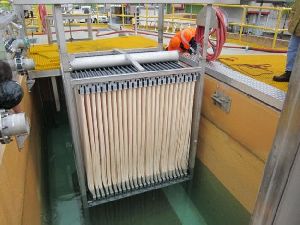
Membrane Bioreactor
Get Price Quote
Advantages : Reduced footprint, by eliminating secondary clarifiers and media tertiary filtration. The process produces exceptional effluent quality, capable of meeting the most stringent water quality requirements. Modular schematic that allows for ease of expansion and configuration flexibility. Robust and reliable operation and reduced downstream disinfection requirements.

Membrane Bioreactor
Get Price Quote

Membrane Bio Reactor
Get Price Quote
Benefits Latest Technology For Treating Industrial Effluents Increased Performance , Due To High Mlss Lesser Area Required Than Conventional Activated Sludge Process Eliminates Requirement For Tertiary Treatment Outlet Water Can Be Used Recycled After Uv Uf Ro Can Be Easily Upgraded

Membrane Bio Reactors
1 - 60 Per piece
1 p (MOQ)
Imemflo ‘s HF-MBR-IA/IB elements have a microporous structure in the membrane's surface of 0.25 f for optimal microfiltration. PVDF materials delivers greater strength & durability. Imemflo HF-MBR-IA/IB Series membranes are made of a strong tubular woven tube and coated with a functional layer of our proprietary permanently hydrophilic PVDF membrane PVDF Material Features Permanently hydrophilic Enhanced durability tensile strength High permeability Excellent chemical resistance

Membrane Bioreactor
500,000 Per Piece
01 Piece (MOQ)

Wastewater Treatment Membrane Bioreactor
Get Price Quote
We are involved in the business of exporting and supplying efficient Wastewater Treatment Membrane Bioreactor. It is a combination of biological waste water treatment and membrane filtration. Wastewater Treatment Membrane Bioreactor that we offer is helpful in reducing bio degradable pollution using bacteria and microorganisms. It features PVDF flat sheet membranes along with a PET non-woven support layer. The nominal pore size is 0.08 microns with a narrow pore size distribution and the membrane elements with a 1.4m2 membrane area are jointed to the membrane module. These modules are composed of 20 to 200 membrane elements. Moreover, the membray modules consist of the stainless steel element frame, the membrane element and the aeration block.
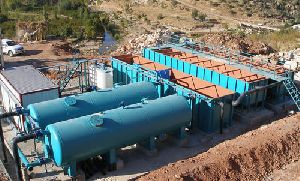
Package MBR Treatment Plants
246,000 Per UNIT

Membrane Bioreactor
1,500,000 Per Unit

Membrane Bio Reactor
Get Price Quote
Our Membrane Bio reactor is one the most latest clean technology used for treating sewage / industrial effluent. We source the reactor from one the world best MBR manufacturer and design them as per the specification. Our MBR is best suitable for the hotels / commercial complexes requiring high purity of treated water for usage into utility/services in minimum spaces. The water which is treated through MBR does not require any further filtration thus saving of space.

Membrane Bio Reactors
Get Price Quote
Membrane Bio Rector (MBR) is the combination of membrane process like microfiltration or ultra filtration with suspended growth bioreactor. This very compact arrangement produce a MF/UF quality effluent suitable for reuse applications or as a high quality feed water source for Reverse Osmosis treatment. In MBR system the wastewater is brought in contact with the biomass and then under pressure, filtration through the membrane. The entire biomass is returned to the bioreactor. Excess sludge is pumped out order to maintain a constant sludge age and the membrane is regularly cleaned by backwashing, chemical washing or both. The entire biomass is confined within the system, providing both perfect control of the residence time for the microorganism in the reactor (sludge age) and the disinfection of the effluent. FEATURES Modular Quick Startup Compact design Small footprint Low operating cost No odour problem No chemical consuption High loading rate capability COD, Solids and Nutrient removal in a single unit No sludge bulking problem Low sludge production APPLICATION Wastewater from numerous industrial sources such as 1. Paper Mills 2. Beverage 3. Slaughterhouse 4. Food Processors 5. Chemical Plants, etc.

Membrane Bioreactors
500,000 Per Unit
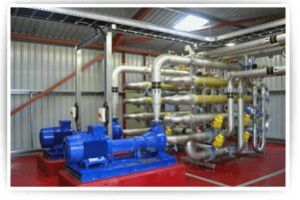
Membrane Bioreactors
Get Price Quote
Two versions of the MBR process are offered by KANKYO, the KANKYO Submem and the KANKYO Crossmem. The KANKYO Crossmem is based on a cross-flow filtration process. The biomass is filtered in a filtration unit besides the bioreactor. The KANKYO Submem is based on filtration with submerged membranes that are submerged in the Membrane bioreactors for wastewater treatment is a combination of a suspended growth biological treatment method, usually activated sludge, with membrane filtration equipment, typically low-pressure microfiltration (MF) or ultrafiltration (UF) membranes. The membranes are used to perform the critical solid-liquid separation function. In activated sludge facilities, this is traditionally accomplished using secondary and tertiary clarifiers along with tertiary filtration. The two general types of MBR systems are vacuum (or gravity-driven) and pressure-driven systems. Vacuum or gravity systems are immersed and normally employ hollow fiber or flat sheet membranes installed in either the bioreactors or a subsequent membrane tank. Pressure driven systems are in-pipe cartridge systems located externally to the bioreactor An “MBR System” is considered to be a complete and integrated membrane unit (sub-systems) with related components necessary to allow the process to function as desired. An MBR, or Membrane Zone, can best be described as the initial step in a biological process where microbes are used to degrade pollutants that are then filtered by a series of submerged membranes (or membrane elements). The individual membranes are housed in units known as modules, cassettes, or racks and a combined series of these modules are referred to as a working membrane unit. Air is introduced through integral diffusers to continually scour membrane surfaces during filtration, facilitate mixing and in some cases, to contribute oxygen to the biological process. Advantages Very stable process The conventional biological system is sensitive to the wastewater composition. Due to variations in wastewater composition and/or presence of complex or toxic substances, high salt concentrations or low oxygen concentrations, the biomass floc formation is poor and the settling process will not perform well. This results in discharge of the micro-organisms and poor effluent quality. The membranes will however withhold all biomass and other suspended solids, ensuring a high effluent quality. Very compact design Due to the membrane separation the active micro-organism population in the bioreactor can be maintained at a concentration 4-5 times higher than in conventional systems. This results in bioreactor tank volumes of only 20-25% of the size of conventional systems. A clarifier, being a space-consuming tank, is not required. High effluent quality The ultra filtration membranes withhold all micro-organisms and most suspended solids, resulting in a clear and highly purified effluent. The effluent may be reused as low-grade process water or for irrigation purposes. Low sludge production The MBR can operate at a low F/M ratio, being the Feed of organic substance per amount of Micro-organisms per time unit. This results in a high mineralisation of sludge. In conventional systems 1 kg COD will result in about 0,3 -0,4 kg of biomass. With MBR systems 1 kg COD is converted to 0 - 0,2 kg biomass (zero biomass production can be obtained when operating at high temperatures). The discharge of biomass can have significant impact on the operational costs of the system. Treatment wastewater up to 60 °C is possible Treatment of wastewater with chlorine concentrations up to 120 g/l Insentive to shock and vibration (on board of ships) Field of Application: Poorly degradable water (lightly sludge-sensitive) In limited space Stringent discharge regulations Reuse

Membrane Bioreactor
Get Price Quote
It is proposed to use Membrane Bio-Reactor (MBR) system working on the principle of filtration of activated sludge through the concept of using flat sheet type or hollow fibre type submerged membrane modules in bioreactors. The membranes in a MBR system are made from polymeric organics (PVDF, PE or PES) and assembled into units (modules, cassettes, stacks) with high packing density. Raw wastewater pre-treatment is important to sustain stable MBR performance and fine screening is essential operation. Advantages MBR is capable of meeting the most stringent effluent water quality standards. Membrane modules are back-flushable Yield 60-80% less sludge than conventional system Requires cleaning only once in 3 to 6 months. Maintain high MLSS No secondary clarifier, virtually no effluent suspended solids, no RAS recycling. It allows systems to be remotely operated and monitored, thus significantly reducing operator attendance. Sludge can be wasted directly from aeration tank